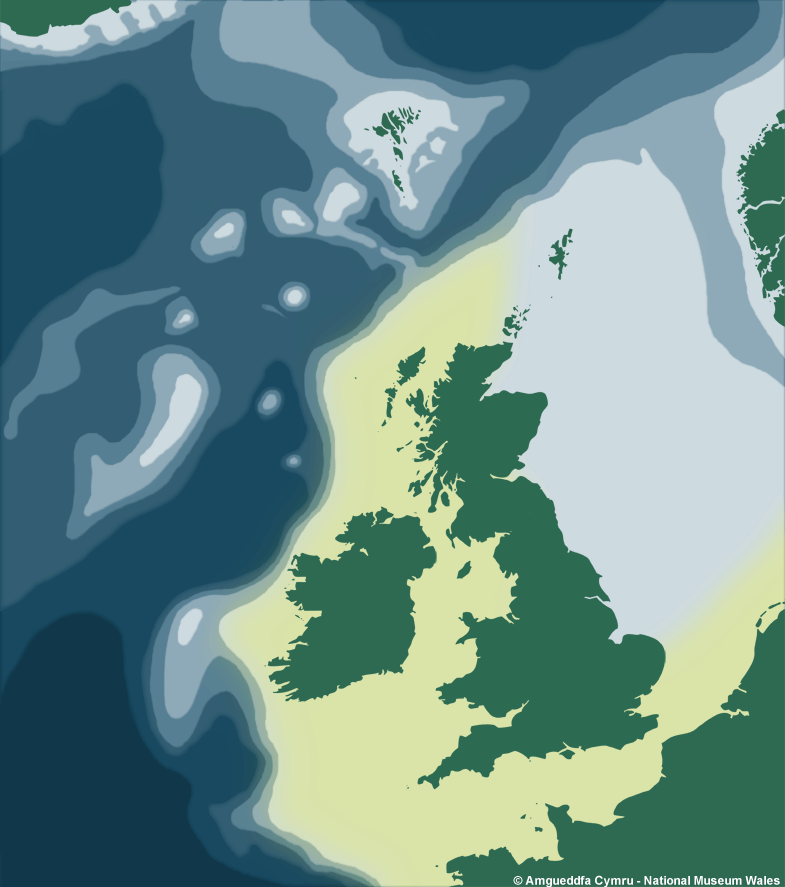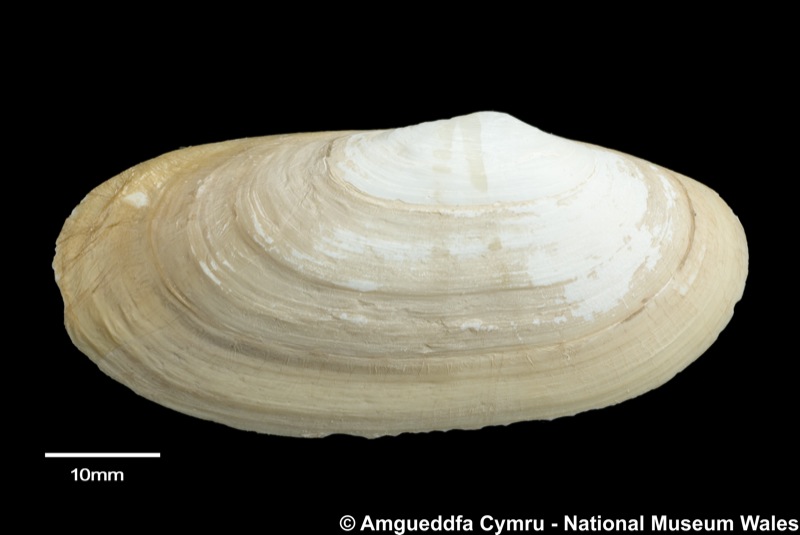Lutraria angustior Philippi, 1844
Mactroidea : Mactridae |
| Tebble name: | Lutraria angustior Philippi |
| Smith & Heppell name: | Lutraria angustior Philippi, 1844 |
To size:
To 115mm.
Shell Structure:
Thick, solid.
Equivalve:
Equivalve.
Equilateral:
Inequilateral, beaks to anterior.
Tumidity:
Not tumid.
Outline:
Elongate ovate, beaks one third the way along the dorsal margin. Anterior dorsal margin relatively short, slightly curved to anterior margin which is broadly rounded. Posterior dorsal margin twice the length of anterior leading to rounded (more narrowly than anterior) posterior margin. Dorsal margin straight at beaks. Ventral margin curves down slightly one third of the way along ventral margin to mirror the beaks.
Contour:
Large posterior and narrow anterior gape so that the valves only meet at the hinge and a small region of the ventral margin. Animal is able to use hinge to narrow the posterior gape and open the anterior slightly by rocking the hinge.
Sculpture:
Concentric lines and ridges.
Margin:
Smooth.
Ligament:
External small, dark brown and deep. Internal part on a large spoon-shaped chondrophore, the top is just under the beaks and the bottom angled to the bottom left of the valve.
Hinge:
LV two cardinals in inverted v-shape anterior to ligament pit (and a single thin cardinal behind these just in front of the ligament pit). A single long, thin, anterior lateral exists, which frequently breaks off. RV two cardinals, the anterior, consisting of two overlapping teeth, curves downwards diverging the posterior at 60°-80°, one single posterior lateral.
Pallial Musculature:
Deep pallial sinus to beaks, pallial sinus runs almost parallel to pallial line and they are confluent for part of the distance. This distance varys from specimen to specimen, but the sinus touches the line unlike
L. lutraria
which is not at all confluent and a v-shape is formed where the two are joined.
Periostracum:
Thin, pale brown.
Colour:
White.
Distribution & Ecology
Depth Range
Intertidal
Continental Shelf (to 200m)

Additional Information & Related Species
Related Species
Mactroidea : Mactridae
References
Listed are literature citing Lutraria angustior Philippi, 1844. Reference containing the species Type Description is highlighted.
|
Holme N.A. 1959. The British Species of Lutraria (Lamellibranchia), with a description of L. angustior Philippi. Journal of the Marine Biological Association of the United Kingdom. 38: 557-568. |
|
Philippi R A 1844. Enumeratio molluscorum Siciliae cum viventium tum in tellure tertiaria fossilium, quae in itinere suo observavit. Vol. 2 303pp. Eduard Anton, Halle. pls 13-28. |
Resources
- Conchological Society
of Great Britain & Ireland
Provides resources for understanding, identifying, recording, and conserving molluscs - CLEMAM
Check List of European Marine Mollusca - MarLIN
The Marine Life Information Network for Britain and Ireland (MarLIN) provides information for marine environmental management, protection and education. It is a centre of excellence in spatially based and time-series marine biological information and supports good stewardship in the marine environment. - NBN Gateway
National Biodiversity Network's Gateway. Use it to explore UK biodiversity data, as contributed by participating data providers. - BivAToL
- MarBEF
- Malacological Society
- Unitas Malacologica
- Census of Marine Life
- MarBEF
MarBEF, a network of excellence funded by the European Union and consisting of 94 European marine institutes, is a platform to integrate and disseminate knowledge and expertise on marine biodiversity, with links to researchers, industry, stakeholders and the general public.








